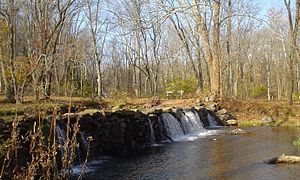
Newlin Township is a township in Chester County, Pennsylvania, United States. The population was 1,285 at the 2010 census.

Concord Township is a township in Delaware County, Pennsylvania, United States. The population was 17,231 at the 2010 census. It contains the unincorporated communities of Concordville and Glen Mills.

Brandywine Creek is a tributary of the Christina River in southeastern Pennsylvania and northern Delaware in the United States. The Lower Brandywine is 20.4 miles (32.8 km) long and is a designated Pennsylvania Scenic River with several tributary streams. The East Branch and West Branch of the creek originate within 2 miles (3 km) of each other on the slopes of Welsh Mountain in Honey Brook Township, Pennsylvania, about 20 miles (32 km) northwest of their confluence.

Concordville is an unincorporated community in Concord Township, Delaware County, Pennsylvania, United States. It is located 20 miles west-southwest of Philadelphia, at the junction of U.S. Routes 1 and 322. This intersection can be traced back to two of the earliest roads in Pennsylvania, Baltimore Pike which became U.S. 1, and Concord Pike, which connected Pennsylvania with Delaware.
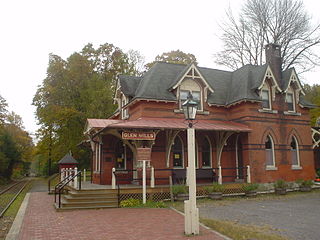
Glen Mills is an unincorporated community in Concord Township, Delaware County, Pennsylvania, United States, located approximately 27 miles west of Philadelphia. The ZIP Code for Glen Mills is 19342.

The Tuthilltown Gristmill is located off Albany Post Road in Gardiner, New York, United States. It was built in 1788, as the National Register reports, and has been expanded several times since.

George Washington's Gristmill was part of the original Mount Vernon plantation, constructed during the lifetime of the United States' first president. The original structure was destroyed about 1850. The Commonwealth of Virginia and the Mount Vernon Ladies’ Association have reconstructed the gristmill and the adjacent distillery. The reconstructed buildings are located at their original site three miles (4.8 km) west of the Mount Vernon mansion near Woodlawn Plantation in the Mont Vernon area of Fairfax County. Because the reconstructed buildings embody the distinctive characteristics of late eighteenth century methods of production and are of importance to the history of Virginia, the site is listed on the National Register of Historic Places despite the fact that the buildings are not original.

The Nicholas Newlin House was built in 1742 in Concordville, Delaware County, Pennsylvania by Nicholas Newlin. Located roughly a mile west of the Newlin Mill Complex, it is located in the Concordville Historic District.

Newlin Miller's House was built by William Newlin during the early nineteenth century in West Whiteland Township, Chester County, Pennsylvania. It is located in the narrow valley of Little Broad Run, a tributary of the East Branch of Brandywine Creek.

Mortonville is an unincorporated area and historic hamlet in Chester County, Pennsylvania, United States, situated on the eastern bank of the West Branch Brandywine Creek. It consists of approximately one-half dozen structures, two of which are on the National Register of Historic Places: the Mortonville Hotel, and the 12.5-foot-long (3.8 m) "Bridge in East Fallowfield Township" which crosses a mill race a few feet east of a larger bridge. The larger bridge, known as the Mortonville Bridge, was also listed on the NRHP until 2010, when it was delisted following a renovation. The two bridges are in East Fallowfield Township, while most other structures are in Newlin Township.

Concordville Historic District is a national historic district located at Concordville, Delaware County, Pennsylvania. The district includes six contributing buildings in Concordville. Four of the buildings are the Newlin Tenant House, Concord Orthodox Meeting, Samuel Trimble House, and 1856 Brick House. The two remaining buildings are separately listed on the National Register; the Concord Friends Meetinghouse and Nicholas Newlin House.

The Nathan Cooper Gristmill is a historic gristmill on the Black River located at 66 NJ Route 24 in Chester Township, Morris County, New Jersey. It was added to the National Register of Historic Places on November 21, 1976 for its significance in industry.
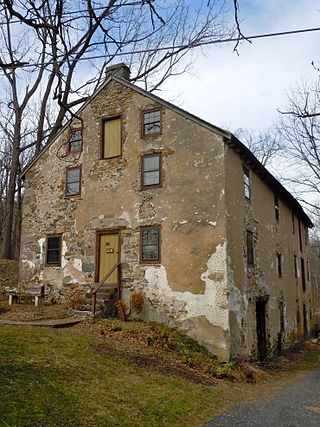
The John Knauer House and Mill, also known as the Knauer Mill, is an historic American grist mill complex that is located in Warwick Township, Chester County, Pennsylvania. The site is situated in the Hopewell Big Woods.
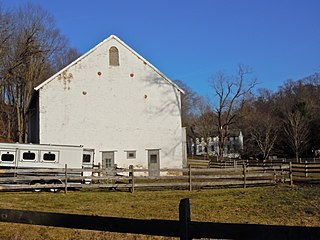
The Glen Rose Historic District is a national historic district which is located in East Fallowfield Township, Chester County, Pennsylvania.

Embreeville Historic District is a national historic district located in Newlin Township, Chester County, Pennsylvania. It encompasses 12 contributing buildings along the east and west banks of the West Branch Brandywine Creek in the village of Embreeville. It includes a variety of vernacular, banked, stuccoed stone buildings. They were largely built between about 1822 and 1842, with the earliest house built about 1760. The buildings include a farmhouse, a country store, a storekeeper's house, a blacksmith's house, a wheelwright's house and store, a grist mill known as the Embreeville Mill, a "mansion" (1856), and miller's house.

Spring Mill is an unincorporated community in Whitemarsh Township, Montgomery County, Pennsylvania, United States.

The Somerset Roller Mills, also known as the Jacobs Creek Grist Mill, are a small former gristmill complex, originally built in the early 18th century, near Titusville in Hopewell Township of Mercer County, New Jersey. It was added to the National Register of Historic Places on November 19, 1974 for its significance in architecture, commerce, and industry.
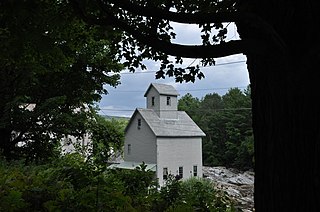
The Kingsley Grist Mill Historic District encompasses a well-preserved small late 19th-century mill complex with surviving 18th-century remnants a Gorge and East Roads in Clarendon, Vermont. The complex includes a house, barn, mill and other outbuildings, and the nearby Kingsley Covered Bridge. The district was listed on the National Register of Historic Places in 2007.
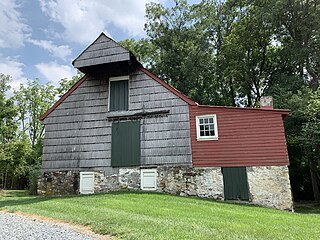
Thomas Mill and Miller's House is a historic grist mill and adjacent dwelling in West Whiteland Township, Chester County, Pennsylvania. Erected between 1744 and 1754, the buildings are made of frame and stone and formed part of the extensive Thomas family holdings in the area. The site was listed on the National Register of Historic Places on May 19, 2004.








